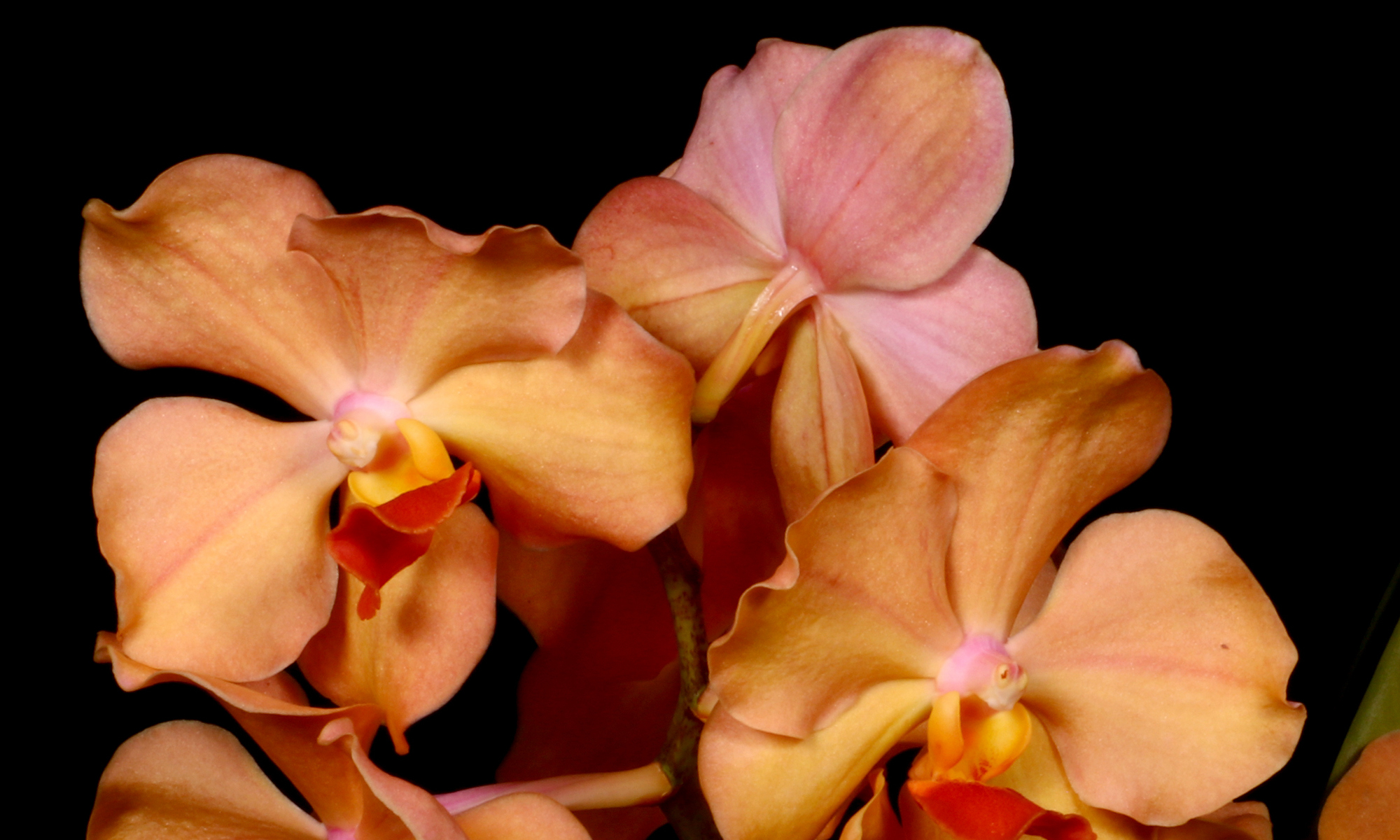Proper watering and fertilizing is necessary to induce an orchid reflower. Since most orchids in cultivation are epiphytes (grow on trees in nature), they are potted in a very porous (open) medium. This has two immediate consequences:
- The orchid medium will not hold water. Shortly after you pour water into the pot, it will drain out the bottom. Water where the plant can drain without causing harm.
- The mix will appear to dry quickly. Resist the temptation to water just because the surface of the potting medium looks dry. It is easy for beginners to overwater their orchids — so beware.
How Often to Water
This is excerpted from the American Orchid Society publication Your First Orchid by Stephen R. Batchelor, pp. 14-17
On the average, most growers water their orchids once or twice a week. This is enough for most potted orchids growing in a sunny window. But if you have your plant outdoors, and it is sunny, warm and dry, you might need to water every other day. On the other hand, if it has been cloudy and cool, once a week could be enough.
Your orchid’s water needs depend on a number of variables. Light, temperature, humidity, air movement, potting medium, type of pot and pot size all affect the amount of water your orchid requires. The best orchid growers adjust their watering schedules to the conditions their plants are experiencing. The table that follows should help you decide whether you should water more often, or less.
The best way, though, to decide whether to water is to check the potting medium. This is where most of the roots are — and it is the roots, after all, that absorb water. Remember, the surface of the medium will dry quickly. What you need to determine is whether the medium is dry below the surface (where the roots are located). There are two ways to do this:
- Stick your finger or the sharp end of a pencil down into the potting medium 1 inch or more. If the medium feels wet or the pencil is moist, delay watering a few days and check again. Water when the medium feels moist, but not entirely dry.
- Water by weight. Lift your orchid an hour or so after you next water. Make a mental note of how much it weighs — or actually weigh it on a scale. Lift or weigh it again in a few days, and, when it feels significantly lighter, water. If you do this enough, you will develop a sense by weight of when the plant is dry.
Whenever you water, be sure to:
- Use lukewarm water. (Cold water could shock your orchid.)
- Wet all sections of the plant’s container.
- Apply enough water to flush the potting medium thoroughly. (This also helps minimize salt build-up, which can damage roots.)
Adjusting How Often You Water
| Water MORE often when: | Water LESS often when: |
| there’s more light | there’s less light |
| the temperatures are higher | the temperatures are lower |
| the humidity is lower | the humidity is higher |
| there’s more air movement | there’s less air movement |
| the plant has thin leaves and growths | the plant has thick leaves and growths |
| the plant is mounted on a slab or is growing in a basket | the plant is in a pot |
| the pot is small | the pot is large |
| the pot is clay (porous) | the pot is plastic (nonporous) |
